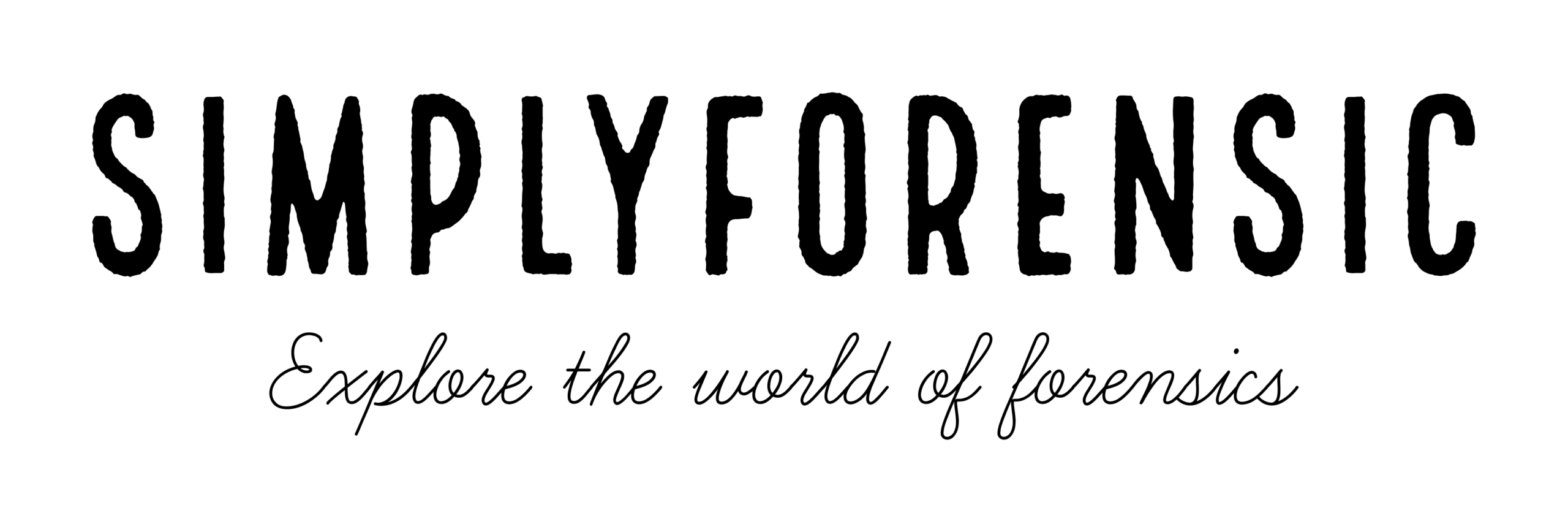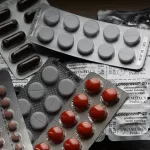- Introduction: Unveiling the Secrets of Poisons
- What Exactly Is Poison? Drawing the Fine Line Between Medicine and Harm
- Acute Poisoning vs. Chronic Poisoning: A Battle of Timeframes
- Subacute Poisoning and Fulminant Poisoning: The Gray Areas
- Classifying Poisons by Their Mode of Action: Understanding the Effects
- Corrosive Poisons: Wreaking Havoc on Tissues
- Irritant Poisons: Pain, Vomiting, and Ulceration
- Systematic Poisons: Targeting Organs and Nerves
- Classifying Poisons Based on Their Nature: Gaseous, Volatile, and More
- Gaseous Poisons: The Breath of Danger
- Volatile Inorganic Poisons: Slow Inhalation, Serious Effects
- Volatile Organic Poisons: Sublimation in the Air
- Non-volatile Organic Poisons: The Acidic and Basic Divide
- Non-volatile Inorganic Poisoning: Cations and Anions at Play
- Plant Poisoning: The Organic Impact
- Miscellaneous Poisons: A Diverse Collection
- FAQs: Unraveling Common Questions About Poisons
- Wrapping Up: Understanding the Intricacies of Poisons
Introduction: Unveiling the Secrets of Poisons
The science of toxicology delves into the properties, actions, toxicity, fatal dose, estimation, treatment, and autopsyAn autopsy, also known as a post-mortem examination or necropsy (when performed on animals), is a thorough and systematic medical procedure that involves the examination of a deceased person's body, typically to determine or confirm Read Full Definition findings related to poisonous substances. But how do these substances, known as poisons, impact our bodies? Forensic toxicology comes to the rescue, using its knowledge to aid legal investigations concerning death, poisoning, or drug use. In this article, we embark on a journey to unravel the mysteries of poisons and their classification, shedding light on their varying effects and characteristics.
What Exactly Is Poison? Drawing the Fine Line Between Medicine and Harm
Poison, the menacing term that sends shivers down our spines, is defined as a substance capable of causing structural or functional disturbances in the body, leading to injury or even death. Interestingly, the difference between poison and medicine can be quite subtle. When administered in toxic doses, medicine can turn into poison, and poison in a small dose can be used as medicine. The intent behind administering the substance determines its classification, with life-saving intentions labeling it as medicine and harmful intentions designating it as poison.
Acute Poisoning vs. Chronic Poisoning: A Battle of Timeframes
In the world of toxicology, poisons are classified based on the timeframe and dosage of their administration. Acute poisoning occurs when an excessive single dose or several doses of poison are taken over a short period. This type of poisoning leads to rapid and severe effects on the body, often requiring immediate medical attention.
On the other hand, chronic poisoning unfolds gradually over a long period of time due to small doses of poison being ingested repeatedly. This slow accumulation of toxins in the body can worsen symptoms, making it challenging to detect the source of poisoning initially.
Subacute Poisoning and Fulminant Poisoning: The Gray Areas
Not all poisons fit neatly into the categories of acute or chronic poisoning. Subacute poisoning displays features of both types, with symptoms appearing relatively short but not as immediately severe as acute poisoning.
In contrast, fulminant poisoning is caused by massive doses of poison, resulting in a rapid and often unexpected death, sometimes without any preceding symptoms. This extreme form of poisoning is both challenging and alarming for investigators, given its sudden and devastating nature.
Classifying Poisons by Their Mode of Action: Understanding the Effects
Poisons can be further classified based on their mode of action, shedding light on the specific organs or systems they affect. Let’s explore some of these classifications:
Corrosive Poisons: Wreaking Havoc on Tissues
Corrosive poisons are highly active irritants capable of causing inflammation and ulceration of tissues they come in contact with. These substances often destroy and erode surfaces upon contact. Some examples of corrosive poisons include strong acids like sulfuric acid (H2SO4) and hydrochloric acid (HCl) and strong alkalies like concentrated sodium, potassium, and ammonia hydroxides.
Irritant Poisons: Pain, Vomiting, and Ulceration
Irritant poisons cause abdominal pain, vomiting, and purging, often leading to redness and ulceration in the gastrointestinal tracts during post-mortem examinations. This group is divided into inorganic, organic, and mechanical irritant poisons.
- Inorganic Irritant Poisons: Metallic poisons like phosphorus, chlorine, bromine, and iodine fall under this category, along with non-metallic poisons like lead, copper, arsenic, zinc, and radioactive substances.
- Organic Irritant Poisons: This group includes animal and plant poisons, such as snake venom, cantharides, spiders, marking nuts, abrus precatorius, and calotropis.
- Mechanical Irritant Poisons: These poisons comprise powdered glass, diamond dust, chopped hair, and dried sponges.
Systematic Poisons: Targeting Organs and Nerves
Systematic poisons specifically affect organs or parts of the body, making them particularly dangerous and impactful. This classification includes neurotic, cardiac, asphyxiants, and miscellaneous poisons.
- Neurotic Poisons: Acting Mainly on the Nervous System
- Cerebral Systematic Poisons: Impacting the cerebral part of the brain, these poisons have somniferous, deliriant, or inebriant effects. Examples include opioids, alcohol, sedatives, agrochemical compounds, dhatura, and belladonna.
- Spinal Systematic Poisons: Affecting the spinal cord, poisons like nux vomica and gelsemium fall into this category.
- Peripheral Systematic Poisons: These poisons target the peripheral nerves and include substances like curare and conium.
- Cardiac Poisons: Affecting the Heart
- Poisons in this category, such as digitalis, oleander, aconite, and nicotine, target the heart and can have deadly effects.
- Asphyxiants Poisons: Affecting the Respiratory System
- These poisons affect the respiratory system and include irrespirable gases like carbon monoxide, sewer, and war.
- Miscellaneous Poisons: The Unconventional Ones
- This category includes poisons with diverse actions, such as street drugs, food poisoning agents like mycotoxins, and analgesics.
Classifying Poisons Based on Their Nature: Gaseous, Volatile, and More
The nature of poisons plays a significant role in their effects on the body. Let’s delve into some classifications based on their specific nature:
Gaseous Poisons: The Breath of Danger
Gaseous poisons exist in a gaseous state and, when inhaled, impact the oxygen-carrying capacityThe amount of finished product that could be produced, either in one batch or over a defined period of time, and given a set list of variables. Read Full Definition of the blood and damage the respiratory system. Examples of gaseous poisons include carbon monoxide, carbon dioxide, nitrous oxide, and war gases, all of which can be fatal when inhaled.
Volatile Inorganic Poisons: Slow Inhalation, Serious Effects
VolatileIn scientific and chemical contexts, the term "volatile" describes a substance that has the propensity to evaporate or change from a liquid state to a gaseous state readily at normal or room temperatures. Volatility is Read Full Definition inorganic poisons cause acute poisoning when their vapors are inhaled over time. Slow inhalation leads to toxins affecting the body and causing harmful effects. Some examples of volatile inorganic poisons are cyanide, arsine, phosgene, and chloride.
Volatile Organic Poisons: Sublimation in the Air
Volatile organic poisons cause large molecules to sublimate from solids or liquids, forming gases that mix into the atmospheric air. Ethanol, formaldehyde, and acetaldehyde are among examples of volatile organic poisons.
Non-volatile Organic Poisons: The Acidic and Basic Divide
This classification includes both acidic and basic drugs, each with distinct properties. Acidic poisons, like phenolic compounds and salicylates, combine with bases to form salts. Basic poisons, on the other hand, include alkaloids and benzodiazepines.
Non-volatile Inorganic Poisoning: Cations and Anions at Play
Non-volatile inorganic poisons comprise cations and anions, each with its own set of dangerous substances. Examples of anion poisons include halides, dichromate, cyanide, and sulfate. On the other hand, cation poisons encompass substances like lead, mercury, arsenic, and more.
Plant Poisoning: The Organic Impact
Plant poisoning occurs when organic compounds within plants adversely affect the body. Substances like dhatura, belladonna, and nux vomica fall into this category and can be highly dangerous if ingested.
Miscellaneous Poisons: A Diverse Collection
This category encompasses various poisons with different actions and effects on the body. It includes mechanical poisoning (diamond dust, glass powder, chopped hair), food poisoning caused by mycotoxins, and animal or insect poisoning (snake venom, spider venom, and bee stings).
FAQs: Unraveling Common Questions About Poisons
The line between poison and medicine can be blurred, with the intent being the differentiating factor. When administered to save a life, a substance is considered a medicine, and while given to harm, it becomes a poison.
Acute poisoning results from a high dose of poison taken over a short period, causing rapid and severe effects. In contrast, chronic poisoning occurs due to repeated small doses over an extended period, leading to gradually worsening symptoms.
While both corrosive and irritant poisons can cause inflammation and damage to tissues, corrosive poisons also produce ulceration. Corrosive poisons include strong acids and alkalies, while irritant poisons can be inorganic, organic, or mechanical.
Neurotic poisons primarily affect the nervous system, with alkaloids falling under this category. They can have diverse effects on the brain, spinal cord, and peripheral nerves, leading to somniferous, deliriant, or inebriant effects.
Yes, volatile inorganic poisons can cause acute poisoning when their vapors are inhaled over time, gradually affecting the body and leading to harmful effects.
Wrapping Up: Understanding the Intricacies of Poisons
As we conclude our enthralling journey into the world of poisons, we’ve gained insights into their classifications based on the mode of action and nature. We’ve explored acute and chronic poisoning and the dangers posed by corrosive and irritant poisons. Additionally, we’ve unraveled the intricate impacts of systematic poisons on specific organs and nerves and the diverse nature of gaseous, volatile, and non-volatile poisons.
Remember, while toxicology and forensic toxicology play essential roles in understanding poisons, their proper use and handling are crucial to prevent harm. Whether it’s safeguarding against accidental poisoning or conducting thorough investigations, knowledge is our best ally in navigating this enigmatic realm.










